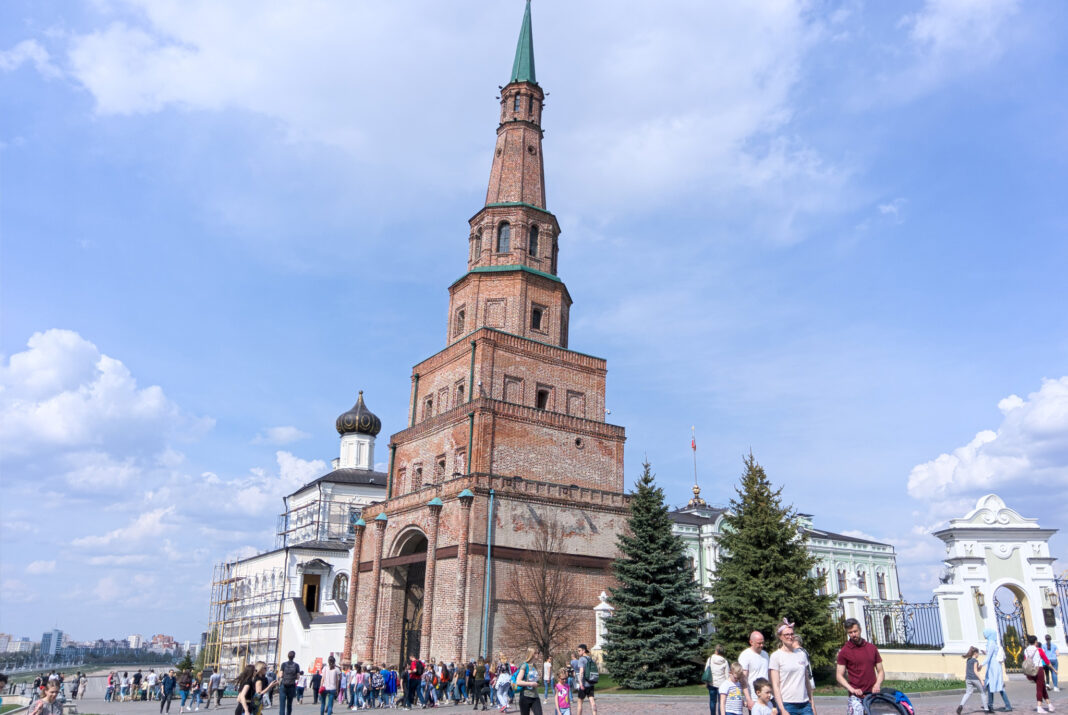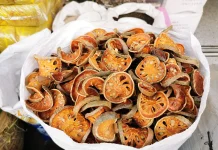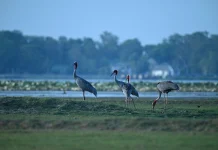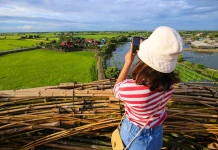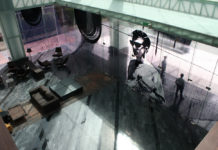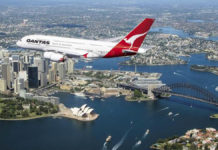When Ivan the Terrible seized Kazan in Tatarstan – so the tale goes – he wanted Princess Syuyumbike, the beautiful niece of the deposed Tatar khan. Nobody wanted the ugly, paranoid dictator as a husband, so out of sheer desperation she agreed to marry him only if he built a tower higher than anything either of them had ever seen.
So he did and once the tower was completed, Ivan the Terrible or Ivan Chetvyorty, the Tsar from Moscow, couldn’t wait for his trophy.
“Princess Syuyumbike ascended the tower,” says Noria, our guide in Kazan, as we’re stroll around Kazan’s kremlin – or fortress. “Then she threw herself off in front of the bewildered Ivan.”
The Tatar princess made it clear – Ivan the Terrible was Ivan the Loser. Leaning, though not quite as badly as like the Tower of Pisa in Italy, Syuyumbike Tower stands around 60 metres tall, and remains a symbol of the ruptured romance, if not the bitter relationship, between the Russians and Tatars.

Founded in 1000 AD, the city of Kazan lies at the confluence of the Volga and Kazanka Rivers. In 1552, Ivan the Terrible’s troops marched from Moscow to Kazan, ravaged the medieval city and baptised the Islamic Tatars into the Eastern Orthodox faith.
“We have no idea what Kazan was like before the arrival of Ivan the Terrible. The city was completely razed by his troops,” says the guide, as we walk along the whitewashed city wall. “The city wall, the fort – everything you see inside the kremlin was built around the sixteenth century or later.
“We know about the medieval Kazan by putting small pieces of old travel stories together. It’s said the city had an eight-minaret mosque, which was razed and replaced by Annunciation Cathedral.”
Kazan’s kremlin is now a Unesco World Heritage Site and a focal point of the city. Perched on the hill like Prague Castle, the kremlin is striking with its whitewashed, limestone walls. Beyond the walls is the Orthodox cathedral built under the supervision of Postnik Yakovlev, who was also responsible for St Basil’s Cathedral in Moscow. The cathedral took centre stage for almost five centuries but today is overshadowed by the enormous Kul Sharif Mosque, with its eight minarets, which was completed in 2005.

As we continue our stroll, the feeling that we are in a city of contradictions becomes more pronounced. The onion-like dome of the Orthodox Cathedral, for example, seems to be battling for supremacy against the towering minarets. Street names are bilingual – with Tatar above the Russian.
Leaving Ivan the Terrible and the kremlin on the west end of Kremlyovskaya Road, we stroll along the east end. There, we meet Russia’s revolutionary idol.
“This is the first university in the world to be named after an expelled student,” says Noria, as we stand in front of Lenin State University. “Young Lenin studied Law here, but couldn’t finish. He was expelled because he organised a student riot.”
Writer Leo Tolstoy also studied law and oriental languages at what is now called Kazan University. Maxim Gorgy, the socialist activist and author of “The Mother”, wanted to study at the university but didn’t have the qualifications for entry. He worked in at bakery shop in Kazan by day and wrote by night. He attempted suicide by the banks of Kazanka River.
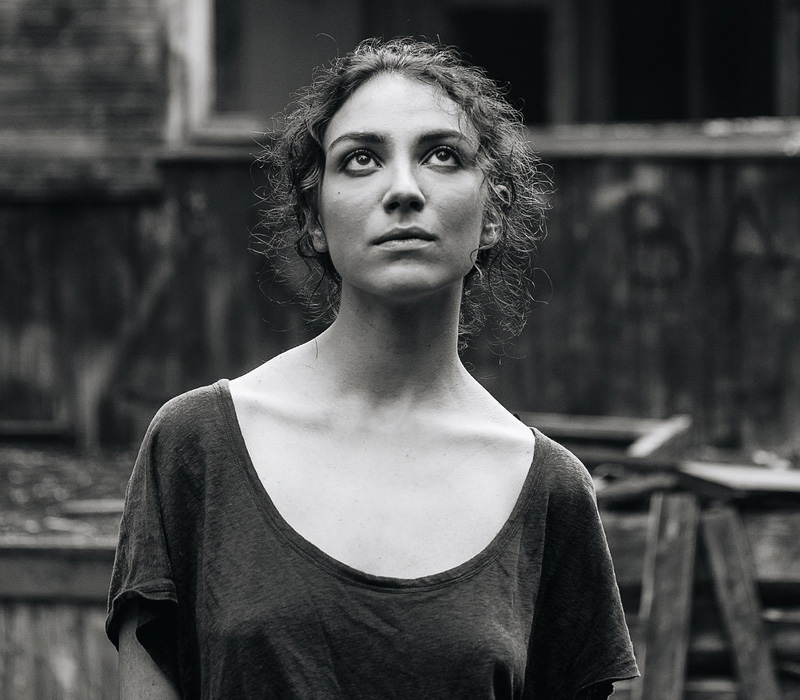

Opposite the university, across Kremlyovskaya Road, is a statue of the young Lenin. To me, he looks a little like Leonardo DiCaprio – a rebellious young man with a hint of an anti-social personality in his eyes. Lenin is not been popular in Kazan since the city embraced capitalism.
And with vast reserves of crude oil all around Tatarstan, Kazan is enjoying all the trappings of capitalism. Rundown buildings are being torn down to make place for modern construction and Noria believes her city will be more beautiful in next five years.
The Kazan town centre is bisected by the Bulak Canal, leaving one northern bank for the Russian and another for the Tatar and their mosques. Baumana is a long pedestrian street with both sides full of shops selling handicrafts like the matryoshka, the Russian nesting doll. The huge redbrick Theophany Church Belfry is also a landmark. A small chapel inside is dedicated to Russia’s first musical idol – the early 20th-century opera singer Fyodor Chaliapin. He started his career in the church’s choir.
We enjoy a delightful ride into the countryside to visit the Raifa Monastery, named after the similarly named Raithu Monastery in Sinai. With striking Bell Tower, the monastery is established in 1613 near the lake.

The main church of Raifa Monastery is clustered with Holy Trinity Cathedral, Cathedral of God’s Mother of Georgia, Church of the Ss Reverend Fathers tortured in Sinai and Raithu, and a Bell tower with over-the-gate Church of Archangel Michael. The most remarkable is the Holy Trinity Cathedral.
“The cathedral is designed to carry the finest acoustics,” says Noria. “When the monks sing in the church gallery, their voices can be heard a few kilometres away.”
Kazan, in many ways, is the Istanbul of the Volga. It’s a place where Europe and Asia curiously inspect each other from the tops of church belfries and minarets. Outside, on the pedestrian street of Baumana, attractive blonde Russians wander around in leather jackets. Inside the restaurants, similar blondes wear traditional Tatar costumes – which look so much like traditional Turkish outfits.
“During the Communist Era, the priests were loaded on to ships and sunk into the Volga River,” says Noria, as we’re head out of the monastery to the parking lot.
I ask her who is more terrible: Ivan the Terrible or Lenin the Marxist.
“With the tsar, people had bread and religion, hope and faith. Lenin took them all,” she says.
IF YOU GO
Aeroflot and Thai Airways International provides direct flight between Moscow and Bangkok. Thai citizens get a visa on arrival. Overnight trains run between Moscow and Kazan. Russian trains are safe and clean. For more Rusia travel information, contact Aeroglobal – a travel agent in Bangkok.

